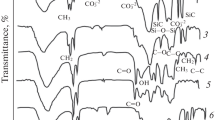Abstract
The paper presents some measurements of the hydrothermal stability of experimental adhesive joints in water at 100°C. The joints are between one adhesive silicone rubber and ten metal or metal-oxide adherends, all combinations of interest to the neurological prosthesis maker. The probable adhesion mechanism is then considered, in the search for some parameter by which the experimental results could have been predicted. Evidence is produced that physical adsorption plays little or no part in the adhesion, but that hydrothermal stability seems to be a function of the adherend ionic charge. In pursuit of this idea, the valency, the Slater potential and the iso-electric point for the surface (IEPS) of the adherend are examined as possible prediction parameters. It is concluded that, at least in neutral and acidified water, the IEPS is a promising predictor, with the benefit that it is experimentally determinable for adherends of unknown composition. The most stable joints seem to occur when the charge density on the adherend has an optimum negative value.
Similar content being viewed by others
References
Bolger, J. C., andMichaels, A. S. (1968): ‘Molecular structure and electrostatic interactions at polymer-solid surfaces’in Weiss andCheever (Eds.) ‘Interface conversion for polymer coatings’ (Elsevier, USA)
Bolger, J.C. (1983): ‘Acid-base interactions between oxide surfaces and polar organic compounds’in Mittal, K. L. (Ed): ‘Adhesion aspects of polymeric coatings’ (Plenum Press, New York & London)
Davies, J. T., andRideal, E. K. (1961): ‘Interfacial phenomena’ (Academic Press, New York, & London)
Donaldson, P. E. K. (1982): ‘The underwater life of joints between some adherend and adhesive materials useful in neurological prosthesis-making’. Int. Conf. on Biomedical Polymers, Durham, Biological Engineering Society/Plastics & Rubber Institute
Donaldson, P. E. K. (1991): ‘Aspects of silicone rubber as encapsulant for neurological prostheses. Pt 1: Osmosis,’Med. & Biol. Eng. & Comput.,29, pp. 34–39
Donaldson, P. E. K. (1993): ‘The electric charge on 96% alumina, in water,’Med. & Biol. Eng. & Comput.,31, pp. 75–78
Donaldson, P. E. K. (1995): ‘The acidity of a single-part, alkoxycure, silicone rubber, DC3140,’Med. & Biol. Eng. & Comput.,33, ???
Huheey, J. E. (1972): ‘Inorganic chemistry: principles of structure and reactivity’ (Harper & Row, New York, Chaps 2 & 3
James, R. D., andParks, G. A. (1982): ‘Characterisation of aqueous colloids’in Matijevic E. (Ed.): ‘Surface and colloid science, vol. 12’ (Plenum Press, New York)
Kinloch, A. J. (1987a): ‘Adhesion and adhesives’ (Chapman & Hall, London) Chap. 3.
Kinloch, A. J. (1978b): ‘Adhesion and adhesives’ (Chapman & Hall, London) Chap. 3, p. 364
Mittal, K. L., andAnderson, H. R. (Eds.) (1991): ‘Acid-base interactions: relevance to adhesion science and technology’ (VSP Utrecht)
Parks, G. A. (1965): ‘The isoelectric points of solid oxides, solid hydroxides and aqueous hydroxo complex systems,’Chem. Rev.,65, pp. 177–198.
Plueddemann, E. P. (1974): ‘Mechanism of adhesion through silane coupling agents’in ‘Composite materials, Vol. 6: Interfaces in polymer matrix composites’ (Academic Press, New York & London)
Plueddemann, E. P. (1982): ‘Silane coupling agents’ (Plenum Press, New York) p. 91
Shannon, R. D. (1976):Acta Crystallogr.,A32, p. 751
Shaw, D. J. (1980): ‘Introduction to colloid and surface chemistry’ (Butterworths, London) 3rd edn.
Wake, W. C. (1982a): ‘Adhesion and the formulation of adhesives’ (Applied Science Publishers, Barking, UK)
Weke, W. C. (1982b): ‘Adhesion and the formation of adhesives’ (Applied Science Publishers, Barking, UK)
Author information
Authors and Affiliations
Rights and permissions
About this article
Cite this article
Donaldson, P.E.K., Aylett, B.J. Aspects of silicone rubber as encapsulant for neurological prostheses. Med. Biol. Eng. Comput. 33, 285–292 (1995). https://doi.org/10.1007/BF02510501
Received:
Accepted:
Issue Date:
DOI: https://doi.org/10.1007/BF02510501



